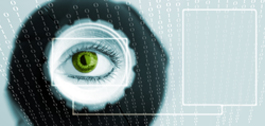Self-movement perception in the elderly
Movement towards a target in space requires a massive flow of sensory information that has to be analysed in order to avoid possible obstacles. This is not trivial given that visual information, before it reaches the visual centre in the brain, is encoded by the innermost layer of the eye. During active exploration of an environment eyes move constantly and each object's image on the retina shifts while the object might be stable. The question whether image motion on the retina alone allows the brain to estimate the direction of self-movement or an additional visual signal is needed was explored by the EUROKINESIS project partners. Research at the Philipps-Universität Marburg in Germany focused on the medial superior temporal (MST) area in the human brain, for which the main input is the middle temporal (MT) area. Furthermore, the response properties of neurons sensitive to motion in the ventral intrapariental (VIP) area to visual stimuli were investigated by means of a neural network. This network consisted of two layers of neuron-like elements and was trained to develop an accurate representation of the visual information flow. The output layer elements developed response properties that were similar to several properties of MST and VIP neurons. To find age-related changes in the perception of self-motion, extensive simulations were conducted with a varying loss rate of neural elements. This biologically plausible assumption of age-related neuron loss led to a perfect agreement between the neural network output and the results of neurophysical and neuroanatomical experiments. The results will be used to attempt to remedy the decline in the ability of the elderly to make use of visual information by the development of complementary sensory enhancements. Moreover, they have been identified as the starting point for the development of cross-training programs suitable for preventing falls and improving the driving skills of elderly.







